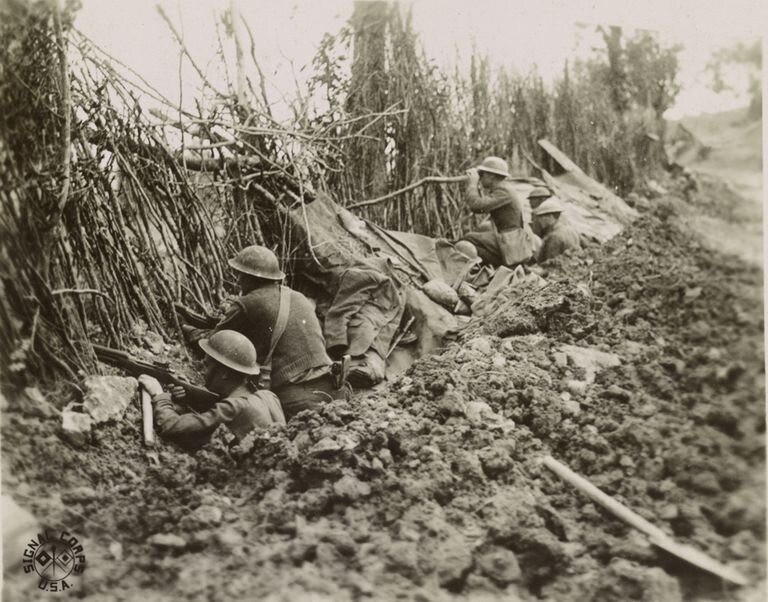Rare Captured German 'Zusammendruck' Trench Map - Meuse Argonne Operations - 29th Engineers U.S. Army Print

































Rare Captured German 'Zusammendruck' Trench Map - Meuse Argonne Operations - 29th Engineers U.S. Army Print
Size: 27.5 x 36 inches
This incredible German World War I operations trench map is labeled ‘nicht in die vordere linie mitnegmen’ (do not take it along in the front line). Marked ‘Zusammendruck’ (overprint) this German map shows an immense amount of information including their army, divisional, regimental, and battalion movement lines and markings. This German map also shows incredible overlays of trench systems around the Argonne region during the Meuse Argonne Operations. Because of the extreme nature of this map including German artillery, observation post, new trench systems, and so much more this map would have been vital to AEF, BEF, and French success and victory if captured. What makes this map so special is that it covers an extremely large region of the Meuse-Argonne Operation including some of the most famous towns and battlefield locations. This map was created through German reconnaissance and intelligence operations by German aircraft. Through aircraft and ground reporting the German Army would create maps. These maps would arrange anywhere from topographical terrain maps, detailed trench maps, artillery and observation positions, etc. This WWI map is marked as being printed at the Base Printing Plant of the 29th Engineers U.S. Army 1919. Very limited plates were stuck of this map as it was printed by AEF soldiers directly from this exact German map. These plates were meant to create multiple documents and period copies of enemy and both Allied maps for intelligence and military distributional purposes. Because this map was printed by AEF forces it was at one point captured from German hands.
The Hundred Days Offensive was a series of massive Allied offensives which ended the World War I. Beginning with the Battle of Amiens (8–12 August) on the Western Front, the Allies pushed the Central Powers back, undoing their gains from the Spring Offensive. The Germans retreated to the Hindenburg Line, but the Allies broke through the line with a series of victories, starting with the Battle of St Quentin Canal on 29 September. The offensive, together with a revolution breaking out in Germany, led to the Armistice of 11 November 1918 which ended the war with an Allied victory. The term "Hundred Days Offensive" does not refer to a battle or strategy, but rather the rapid series of Allied victories against which the German armies had no reply.
Meuse–Argonne Offensive:
The Meuse–Argonne offensive (also known as the Meuse River–Argonne Forest offensive,[6] the Battles of the Meuse–Argonne, and the Meuse–Argonne campaign) was a major part of the final Allied offensive of World War I that stretched along the entire Western Front. It was fought from September 26, 1918, until the Armistice of November 11, 1918, a total of 47 days. The Meuse–Argonne offensive was the largest in United States military history, involving 1.2 million American soldiers. It is the second deadliest battle in American history, resulting in over 350,000 casualties including 28,000 German lives, 26,277 American lives and an unknown number of French lives. U.S. losses were worsened by the inexperience of many of the troops, the tactics used during the early phases of the operation and the widespread onset of the global influenza outbreak called the "Spanish Flu".Meuse–Argonne was the principal engagement of the American Expeditionary Force (AEF) during World War I. It was one of a series of Allied attacks known as the Hundred Days Offensive, which brought the war to an end. It was the largest and bloodiest operation of World War I for the AEF even if, given the scale of other battles on the Western Front, its size was limited and the operation itself secondary as it was far from the main offensive axis.